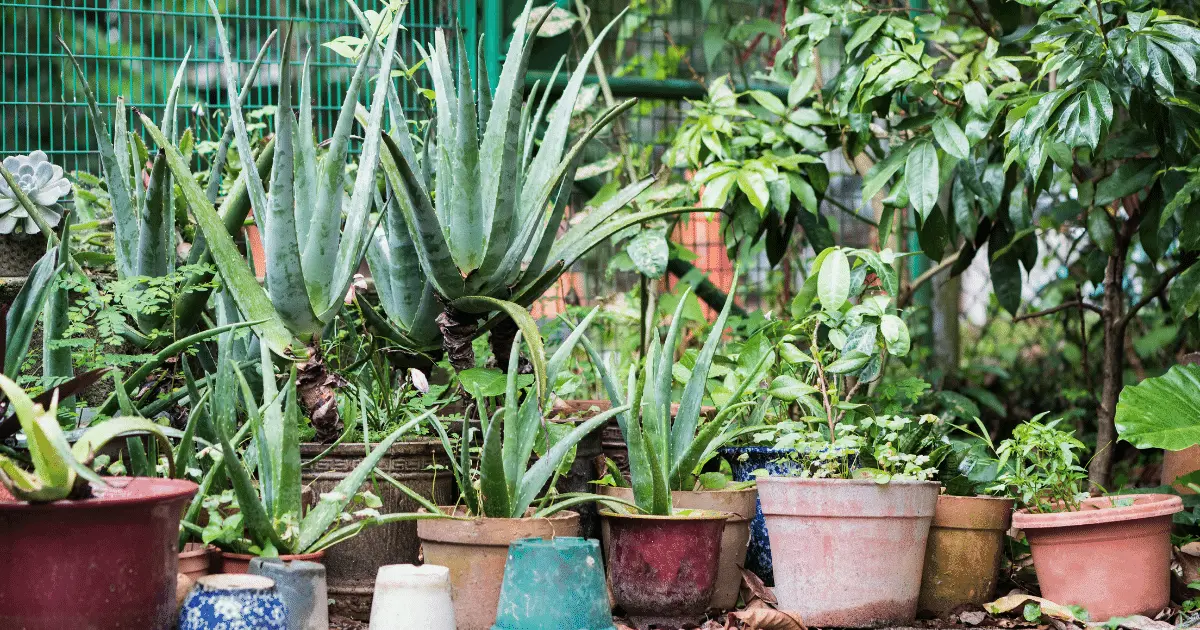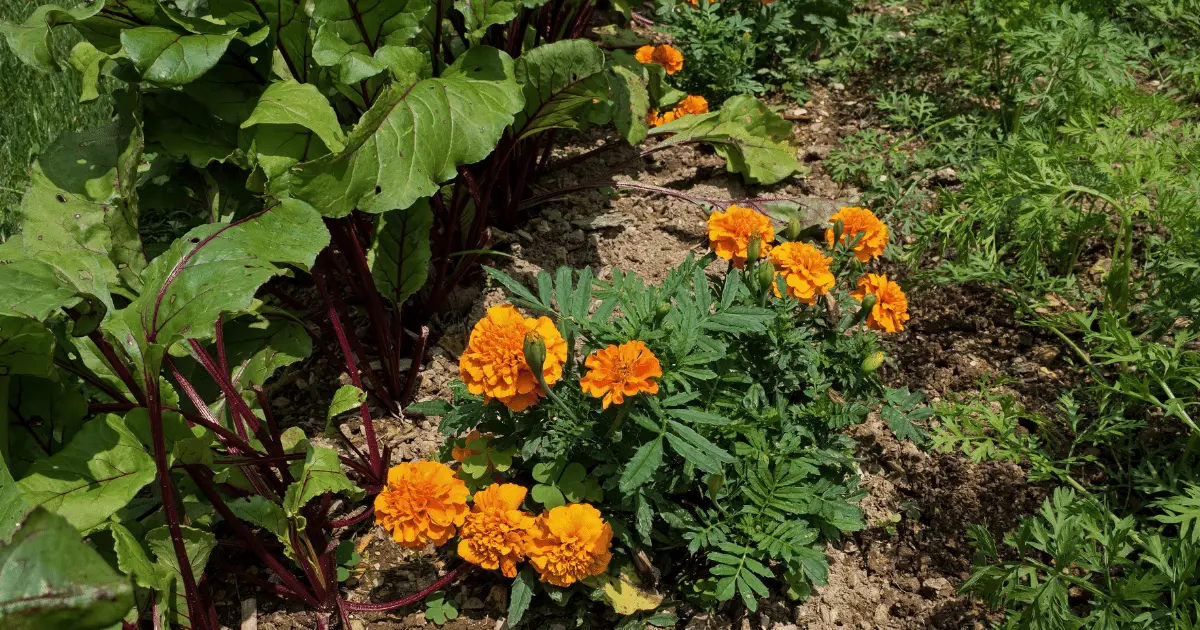I realize that for many beginners to gardening, spacing can be a very confusing aspect of planting. Most people think that gardening is all about throwing a bunch of seeds into the ground and waiting for them to grow. However, gardening is beyond trial and error; it involves an intentional attempt to nurture seeds to maturity.
It can be challenging to determine the precise amount of space your plants need for healthy growth and how densely you can plant them without negatively affecting yields. This simple plant spacing chart will help you quickly know the required spacing for the best results.
Plant Spacing: Does It Really Matter?
I cannot stress enough how much plant spacing matters. Unless you want to waste your time on low yields, you better put in the work to space and thin your plants properly.
For plants to remain healthy over time, proper plant spacing is essential. Plants compete for sunshine, nutrients, and water when they are packed close together. Because poor nourishment or insufficient light reaches the shaded branches, crowded plants frequently produce poor-quality flowers. You can ensure plants have enough space to develop a healthy root system and reduce competition for access to water and nutrients by spacing plants to accommodate the expected mature size of a plant.
In addition to allowing for optimal air circulation around plants, proper plant spacing also aids in the prevention of plant diseases. The development of many disease pathogens requires a damp or humid environment. Reduced airflow in dense plantings makes it more difficult for moisture to evaporate from leaf surfaces, which increases the risk of foliar diseases. As a result of adequate plant spacing, good air circulation helps the garden’s fungus problems.
Also, spacing your plants comes with a pleasing aesthetic. Don’t you want to walk into your garden and take in a well-organized scenery? When you space your plants well from their seed stage, they will grow in an almost perfect formation. By giving your plants enough room to grow, you ensure they remain visually appealing to you and your garden visitors.
Plant Spacing Guide
Below is a simple vegetable spacing guide.
| Vegetable | Inches Between Plants | Inches Between Rows | Depth of Seed |
| Watermelon | 24-72 | 60-120 | 1 |
| Turnip green roots | 2-3 | 12-24 | 1.5 |
| Tomato | 18-36 | 24-48 | 1.5 |
| Squash winter | 24-48 | 60-120 | 1 |
| Squash Summer | 24-36 | 18-48 | 1 |
| Spinach, New Zealand | 12 | 24-36 | 1 |
| Spinach | 2-4 | 12-24 | 1.5 |
| Soybean | 11/2-2 | 24-30 | ½-1 |
| Sorrel | 12-18 | 18-24 | 1/2 |
| Shallot | 6-8 | 12-18 | 1/4 |
| Salsify | 2-4 | 18-24 | 1/2 |
| Rutabaga | 6-8 | 18-24 | 1/2 |
| Rhubarb | 30-36 | 36-48 | |
| Radish | 1-6 | 12-18 | 1/2 |
| Pumpkin | 24-48 | 60-120 | 1 |
| Sweet Potato | 12-18 | 36-48 | 3-5 |
| Irish Potato | 12-18 | 24-36 | 4 |
| Pepper | 18-24 | 24-36 | 1/2 |
| Peanut | 6-8 | 12-18 | 1 |
Plant Spacing Chart for Raised Bed Gardens
If you are going to plant your vegetable, such as tomatoes, in a raised bed, then you can use the chart below to plan your spacing for maximum yield.
| Vegetables | Spacing (inches) | Spacing ( Centimeters) |
| Watermelons | 18-24 | 46-61 |
| Turnips | 3-6 | 8-15 |
| Tomatoes | 18-24 | 46-61 |
| Tomatillos | 24 | 61 |
| Thyme (grown as a perennial) | 12-24 | 30-61 |
| Thyme (grown as an annual) | 6-8 | 15-20 |
| Sweet potatoes | 6-12 | 15-30 |
| Sunflowers | 18-28 | 46-71 |
| Squash, winter | 24-36 | 61-91 |
| Squash, summer | 18-24 | 46-61 |
| Spinach | 3-4 | 8-10 |
| Soybeans | 3-4 | 8-10 |
| Shallots | 3-5 | 8-13 |
| Sage | 12-18 | 30-46 |
| Rutabagas | 4-6 | 10-15 |
| Rosemary (grown as a perennial) | 18-24 | 46-61 |
| Rhubarb | 24-36 | 61-91 |
| Radish, Winter | 4-6 | 10-15 |
| Radish, Spring | 2-3 | 5-8 |
Vegetable Plant Spacing Container

Below is a spacing chart for growing vegetables in a container. I plant vegetables such as peppers using a pot or container.
| Vegetables | Gallons per plant ( Liters) | Spacing ( Centimeters) |
| Turnips | 15 | |
| Tomatoes | 0.5-5 gallon ( 2-19 L) | |
| Swiss chard | 20 | |
| Squash | 5-gallon (19 L) | 30-50 |
| Spinach | 13 | |
| Rhubarb | 5-gallon (19 L) | 30 |
| Radish | 2.5 | |
| Potatoes | 15 | |
| Pepper | 2.5 gallon (9.4 L) | 20 |
| Peas | 5 | |
| Onions | 5-7.6 | |
| Okra | 5-10 gallon (19-38 L) | 20 |
| Mustard greens | 10 | |
| Melons | 5-gallon (19 L) | 38.1 |
| Lettuce | 10-25 | |
| Kale | 41 | |
| Eggplant | 5-gallon (19 L) | 30 |
| Carrot | 2.5-5 | |
| Cabbage | 5-gallon (19 L) | 25 |
How Close Can Plants Be Planted To Each Other?

Some plants are known to do well when they are planted together, and others will not. For example, basil, carrot, Okra, and more are known to do well when planted close to peppers. However, fennel and kohlrabi aren’t known to do well if planted close to pepper. Plants known as companions can be planted in two to three rows of each other. On the other hand, plants that are foes should be planted two to three rows apart from each other.
Numerous neutral plants can be used to fill the space between allies and enemies. So even if two plants don’t complement one another, you can still have both in your yard.
What Happens When Plants are Planted Too Close To Each Other?
Many things can happen when plants are planted too close for comfort. For a start, when plants are kept too close, you force them to compete against each other for nutrients. This is tantamount to throwing ten hungry gladiators into the ring and telling them to fight for the only available chicken nugget.
Along with the conflict above ground, there is also an underground contest between the roots of the competing plants. One plant will ultimately win the battle and suffocate the others too near it. The probability that plants will trample on nearby plants decreases when they are appropriately spaced apart and given the additional growing room they require. Still, remember that having too much open space around them can also be detrimental. What I’m saying, in essence, is that there is a need for moderation, which is why I’ve provided the above spacing charts.
Some plants require nearby plants that are similar to them to pollinate. For the aforementioned survival factors, the appropriate amount of space is still crucial, even in situations like that.
One of the most crucial components of garden maintenance is keeping an eye out for weeds because it keeps your garden healthy and attractive. It is significantly more difficult to weed a garden when plants are planted too closely together. Trust me, it is.
You will eventually get around to harvesting if you want to enjoy the results of your labors. Moving between rows and sections easily is crucial for edible gardens that will be used for consumption when harvesting the produce. When it’s time to harvest, you risk tripping or uprooting nearby plants if the plants are too close together.
